
LOADING ...
In response to evolving domestic opinion, eMedals Inc has made the conscious decision to remove the presentation of German Third Reich historical artifacts from our online catalogue. For three decades, eMedals Inc has made an effort to preserve history in all its forms. As historians and researchers, we have managed sensitive articles and materials with the greatest of care and respect for their past and present social context. We acknowledge the growing sentiments put forth by the Canadian public and have taken proactive actions to address this opinion.
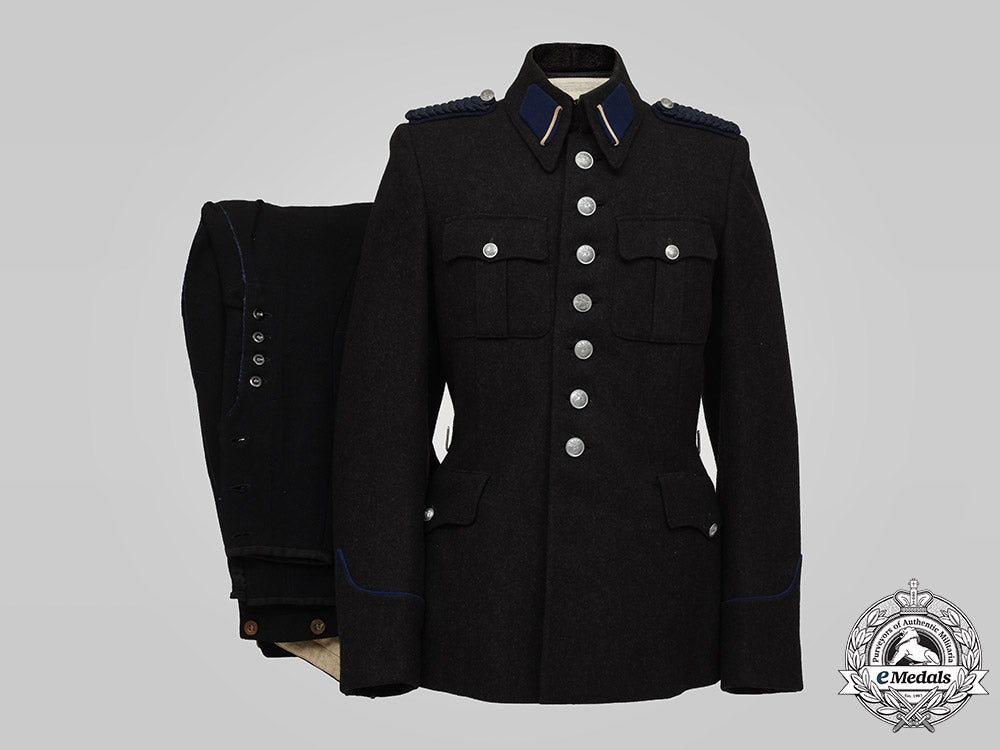
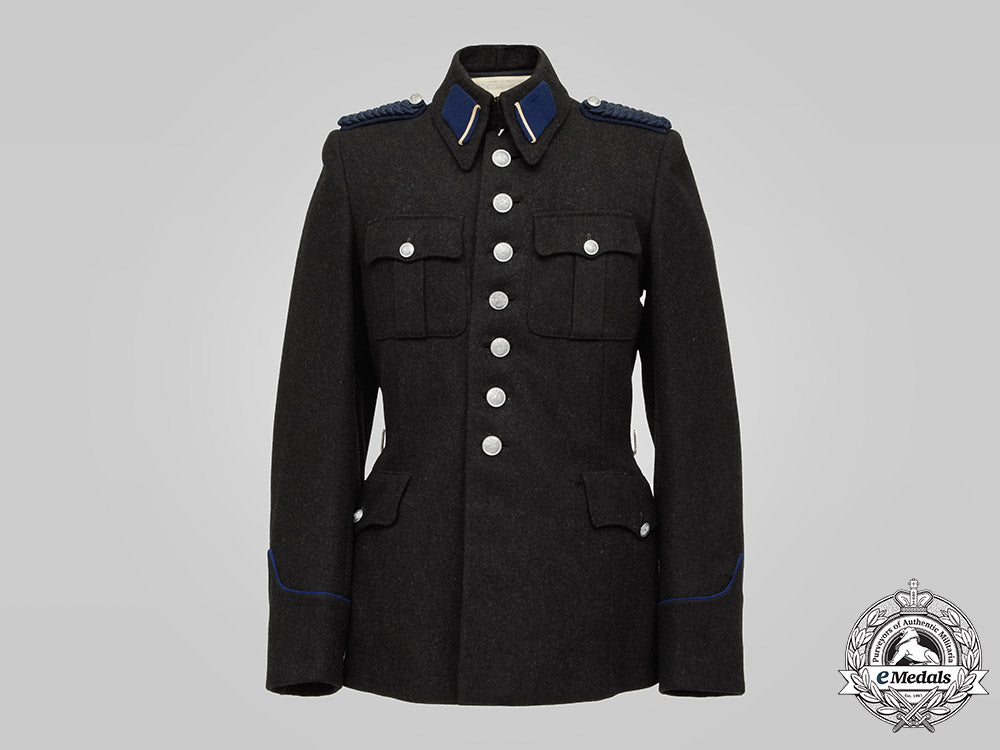
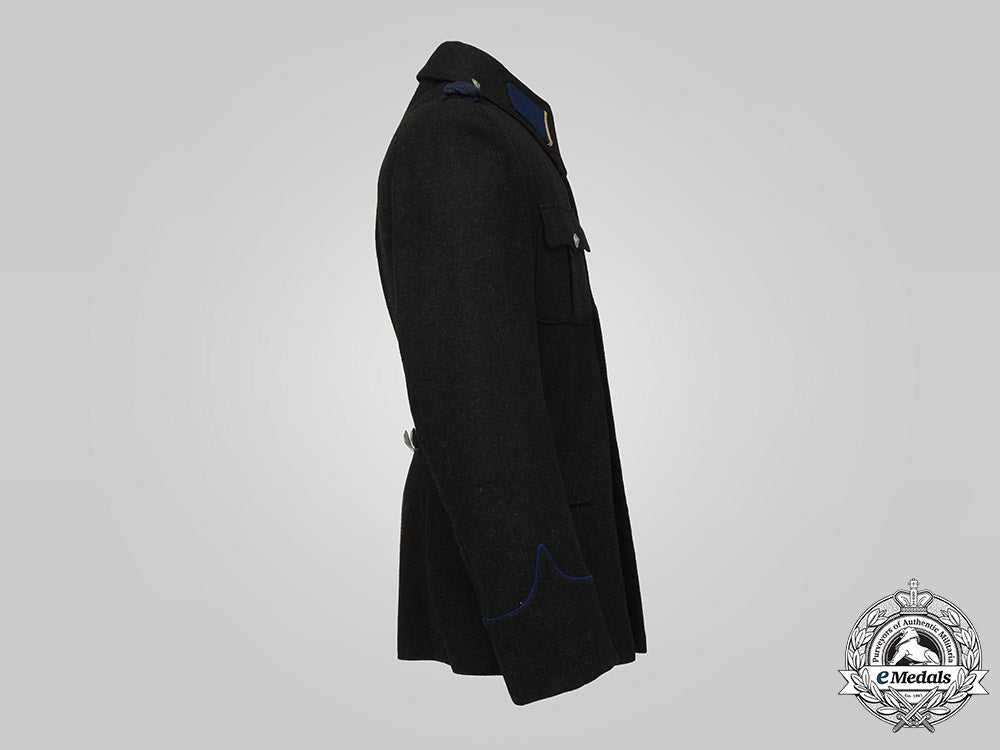
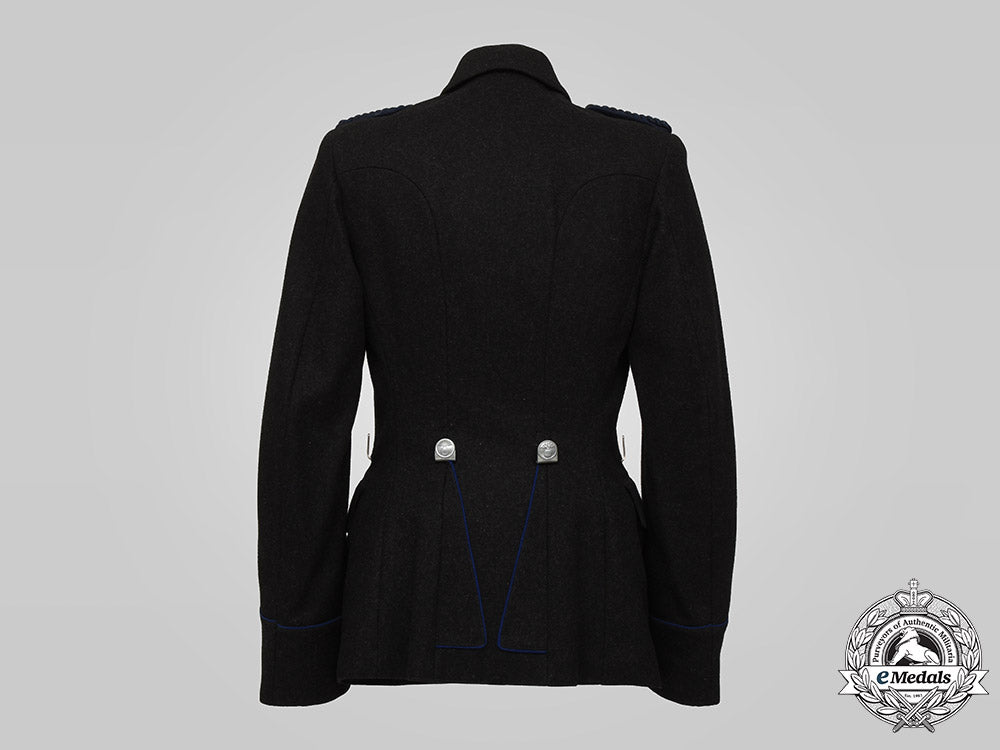
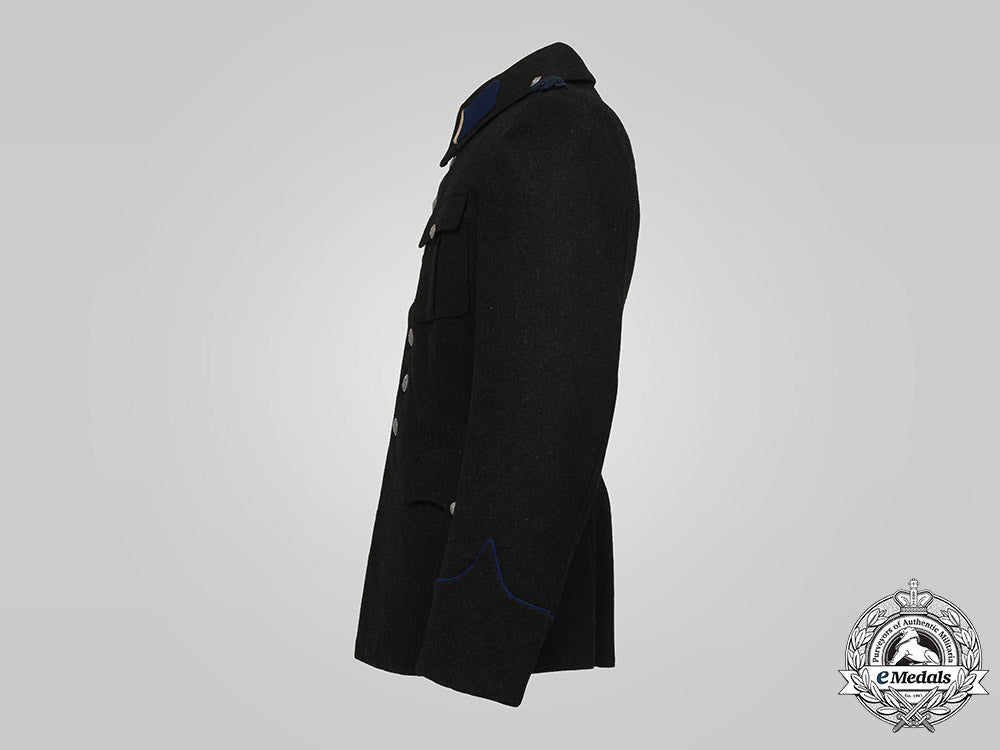
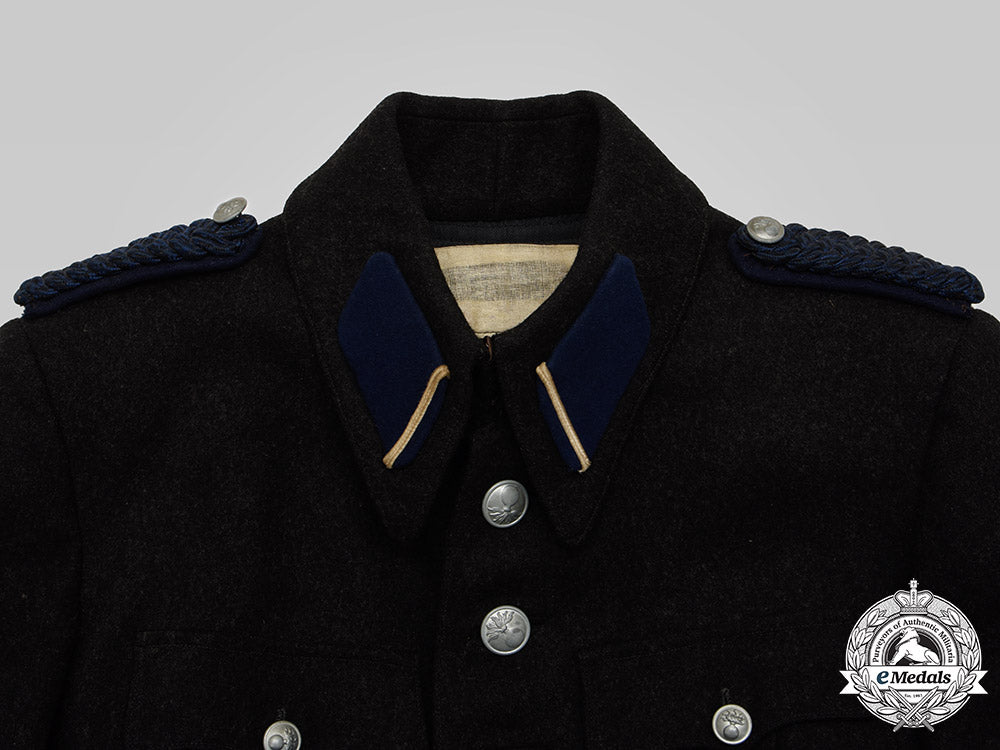
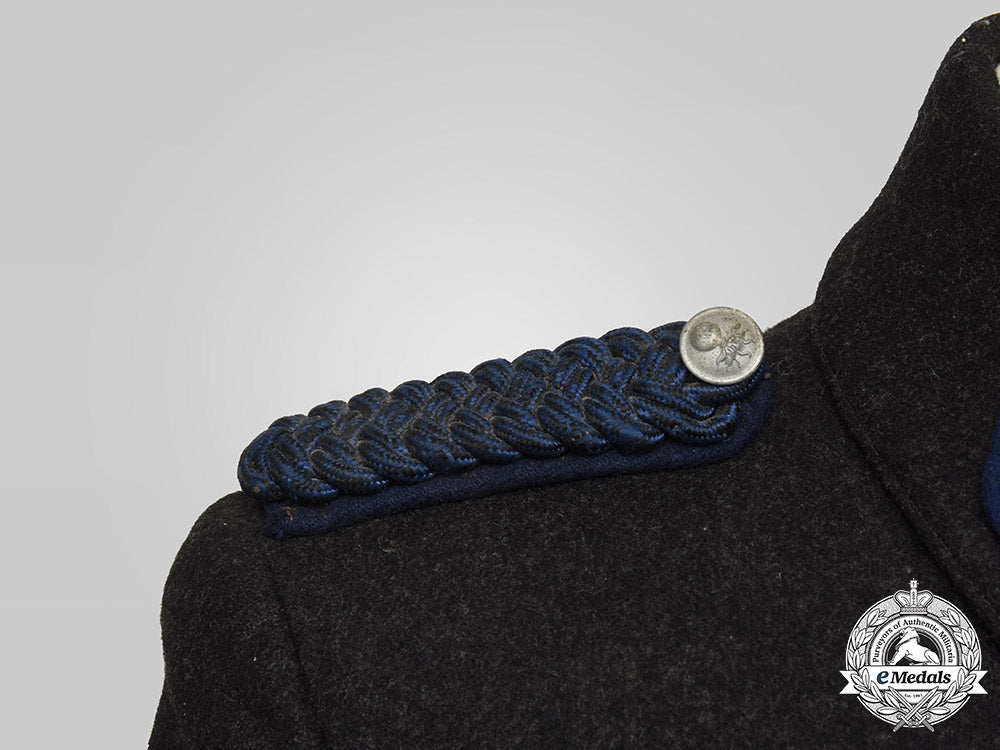
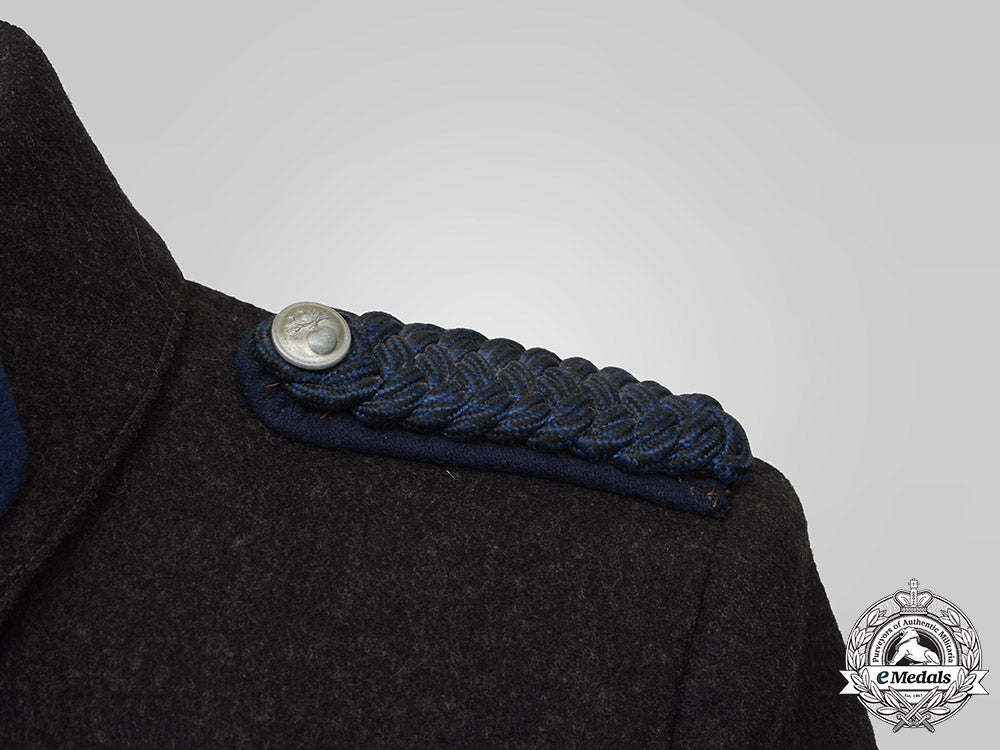
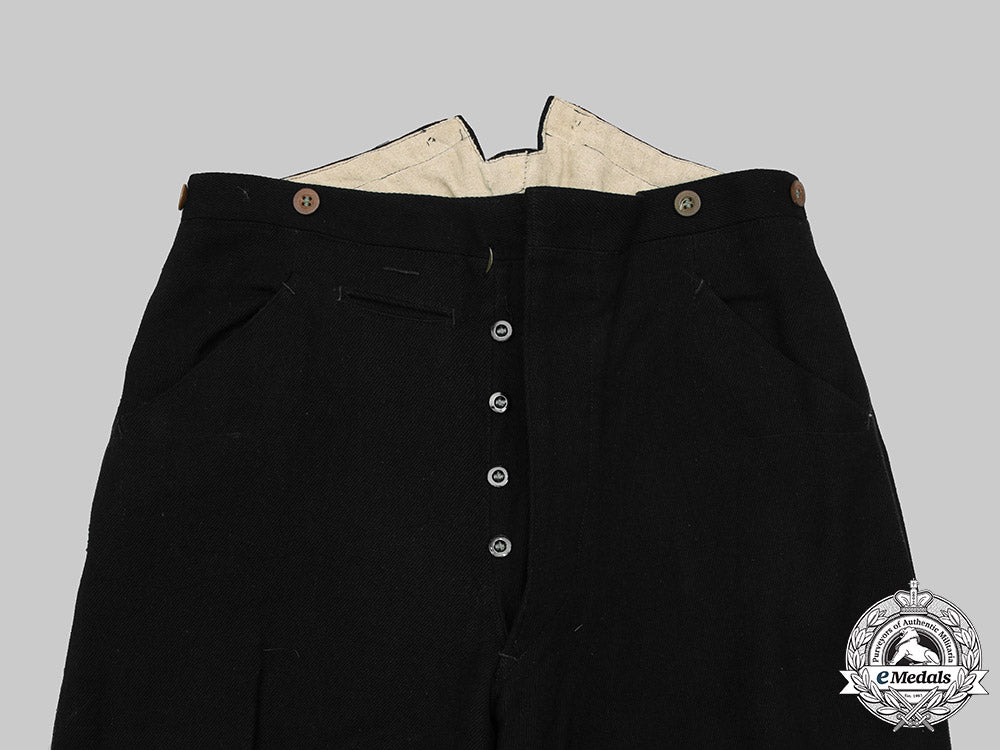
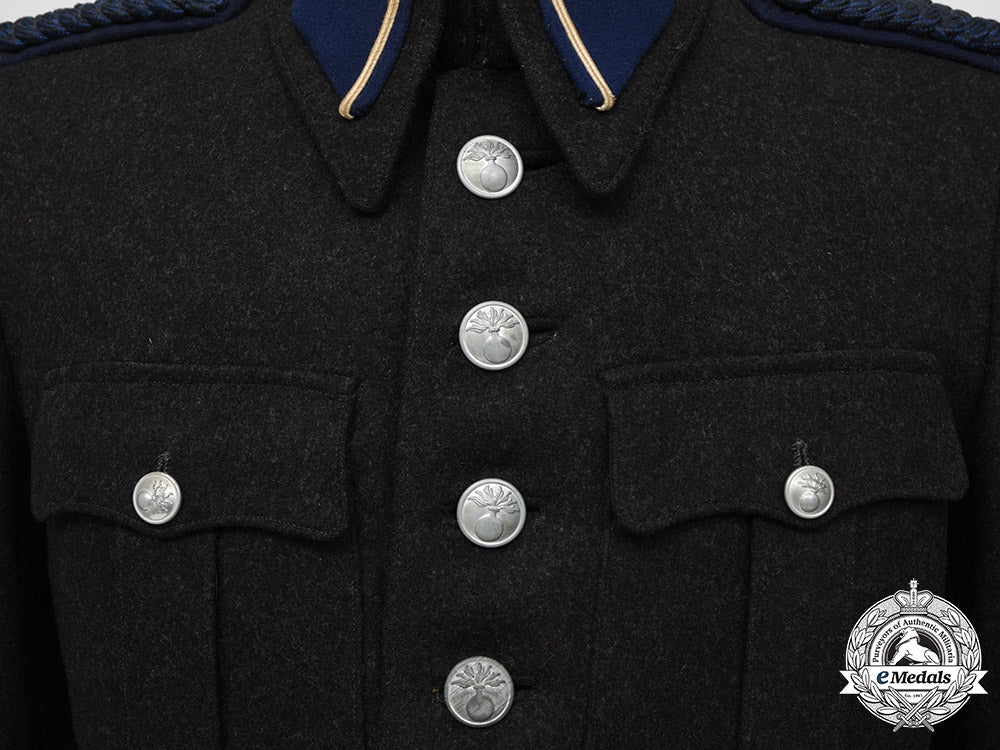
Netherlands, Occupied State. A Royal Netherlands Marechaussee Uniform, C.1942
Netherlands, Occupied State. A Royal Netherlands Marechaussee Uniform, C.1942
SKU: ITEM: EU18771
Current Bid:
Your Max Bid:
Bid History:
Time Remaining:
Couldn't load pickup availability
Shipping Details
Shipping Details
eMedals offers rapid domestic and international shipping. Orders received prior to 12:00pm (EST) will be shipped on the same business day.* Orders placed on Canadian Federal holidays will be dispatched the subsequent business day. Courier tracking numbers are provided for all shipments. All items purchased from eMedals can be returned for a full monetary refund or merchandise credit, providing the criteria presented in our Terms & Conditions are met. *Please note that the addition of a COA may impact dispatch time.
Shipping Details
eMedals offers rapid domestic and international shipping. Orders received prior to 12:00pm (EST) will be shipped on the same business day.* Orders placed on Canadian Federal holidays will be dispatched the subsequent business day. Courier tracking numbers are provided for all shipments. All items purchased from eMedals can be returned for a full monetary refund or merchandise credit, providing the criteria presented in our Terms & Conditions are met. *Please note that the addition of a COA may impact dispatch time.
Description
Description
Includes: tunic and breeches. The tunic is fabricated from a coarse grayish-black wool, with navy blue braided shoulder boards sewn in place, each with a navy blue wool backer and housing a silvered zinc button bearing a flaming grenade. Both collars are adorned with a collar tab in navy blue wool and trimmed in a white cord on the wider edge facing the opening, the collar itself with a dual hook and eye closure, ensuring a snug fit at the neckline. The front has four pockets, one on each breast which have decorative straps giving them a pleated-look, the other two at the waist are without pleats and are larger and deeper than the breast pockets. All four pockets have fold over button down flaps with reinforced button holes and small silvered zinc button bearing a flaming grenade, as per those used on the shoulder straps. The front is completed by a vertical row of seven large silvered zinc buttons bearing a flaming grenade, each of the large buttons maker marked "A & S" (F.W. Assmann & Söhne, Lüdenscheid) on the reverse, facing an equal number of reinforced button holes on the left side. Placed on either side at the waist are metal belt supports, the rear with two silvered aluminum belt supports, each of which bears a flaming grenade. The cuff on each sleeve is trimmed in navy blue piping, as are the two fixed elongated triangular flaps on the rear of the tunic. The interior is lined in black rayon, with black plastic buttons sewn in place behind each of the seven large silvered zinc buttons that appear at the opening on the exterior. There are protective black wool patches stitched in place behind both of the metal belt supports, with an additional large black cotton pocket sewn in place on the far left side near the opening. The sleeves are lined in white rayon and incorporate a repeating triple brown rule design, the right sleeve stamped in faded blue ink with a chattered mark but "CASPAR" is clearly defined as part of the mark. The collar has a white cotton manufacturer's label sewn in place, however, its text has faded with time. The tunic measures 420 mm across the shoulders x 690 mm in length. The accompanying breeches are fabricated from black wool, designed with a button down fly, featuring four black plastic buttons, with a large hook and eye closure at the waist. It has four pockets, including: deep side-entry pockets on both sides at the front without buttons, a smaller one between the right side-entry pocket and the fly, along with one on the right rear seat with a black plastic button, three of the pockets lined in a white cotton, the smaller pocket unlined. The exterior has a length adjustment strap with buckle at the rear waist, with six brown plastic buttons marked "SOLIDE ELEGANT" in German (Solid Elegant) sewn in place at various intervals at the waist. The interior waistband is in white cotton and is stamped in black ink "18" above "45" on the right side. Both pant legs incorporate a vented design, with seven vertically-placed black plastic buttons on the outer leg, facing an equal number of reinforced button holes on the inner leg. Both inner legs are lined in black rayon behind the button holes, the edge of each trimmed in navy blue piping, with the cuff trimmed in a strip of black rayon. The breeches measure 850 mm at the waist x 1,010 mm in length. Both pieces are free of mothing, displaying a wonderful texture in the wool, along with quality workmanship. Near extremely fine.
Footnote: The Royal Netherlands Marechaussee (Koninklijke Marechaussee - abbreviated to KMar) is one of the four branches of the Netherlands Armed Forces. It is a gendarmerie force performing military and civilian police duties. After "Kristallnacht" (Night of Broken Glass, also called the November Pogrom(s), which was a pogrom against Jews carried out by SA paramilitary forces and civilians throughout Nazi Germany on November 9-10, 1938), the Dutch government officially closed its borders to any Jewish refugees. The Dutch Marechaussee border guards searched for them and returned any found to Germany, despite the horrors of Kristallnacht being well known. In 1939, Nicholas Winton succeeded with his Kindertransport, thanks to the guarantees he had obtained from Britain. After the first train, the process of crossing the Netherlands went smoothly. On July 5, 1940, the German occupation government merged the Marechaussee with the "Rijksveldwacht" (Gendarmerie) and the "Gemeenteveldwacht" (Municipal Police Officers). This meant that the Marechaussee lost its military status and the predicate Royal. These changes did not apply to the Marechaussee outside occupied Dutch territory. About 200 Marechaussees guarded the Royal Family and the Dutch government-in-exile, and provided military police services to the Princess Irene Brigade, a brigade formed in the United Kingdom, consisting of Dutchmen. After the Second World War, the Marechaussee was split into a "Korps Rijkspolitie" (National Police Corps) (as a replacement of the Rijksveldwacht and the Gemeenteveldwacht) and the Royal Marechaussee, which regained its military status. The main tasks for the Marechaussee since then have been border protection, military police and guard duties.
Description
Includes: tunic and breeches. The tunic is fabricated from a coarse grayish-black wool, with navy blue braided shoulder boards sewn in place, each with a navy blue wool backer and housing a silvered zinc button bearing a flaming grenade. Both collars are adorned with a collar tab in navy blue wool and trimmed in a white cord on the wider edge facing the opening, the collar itself with a dual hook and eye closure, ensuring a snug fit at the neckline. The front has four pockets, one on each breast which have decorative straps giving them a pleated-look, the other two at the waist are without pleats and are larger and deeper than the breast pockets. All four pockets have fold over button down flaps with reinforced button holes and small silvered zinc button bearing a flaming grenade, as per those used on the shoulder straps. The front is completed by a vertical row of seven large silvered zinc buttons bearing a flaming grenade, each of the large buttons maker marked "A & S" (F.W. Assmann & Söhne, Lüdenscheid) on the reverse, facing an equal number of reinforced button holes on the left side. Placed on either side at the waist are metal belt supports, the rear with two silvered aluminum belt supports, each of which bears a flaming grenade. The cuff on each sleeve is trimmed in navy blue piping, as are the two fixed elongated triangular flaps on the rear of the tunic. The interior is lined in black rayon, with black plastic buttons sewn in place behind each of the seven large silvered zinc buttons that appear at the opening on the exterior. There are protective black wool patches stitched in place behind both of the metal belt supports, with an additional large black cotton pocket sewn in place on the far left side near the opening. The sleeves are lined in white rayon and incorporate a repeating triple brown rule design, the right sleeve stamped in faded blue ink with a chattered mark but "CASPAR" is clearly defined as part of the mark. The collar has a white cotton manufacturer's label sewn in place, however, its text has faded with time. The tunic measures 420 mm across the shoulders x 690 mm in length. The accompanying breeches are fabricated from black wool, designed with a button down fly, featuring four black plastic buttons, with a large hook and eye closure at the waist. It has four pockets, including: deep side-entry pockets on both sides at the front without buttons, a smaller one between the right side-entry pocket and the fly, along with one on the right rear seat with a black plastic button, three of the pockets lined in a white cotton, the smaller pocket unlined. The exterior has a length adjustment strap with buckle at the rear waist, with six brown plastic buttons marked "SOLIDE ELEGANT" in German (Solid Elegant) sewn in place at various intervals at the waist. The interior waistband is in white cotton and is stamped in black ink "18" above "45" on the right side. Both pant legs incorporate a vented design, with seven vertically-placed black plastic buttons on the outer leg, facing an equal number of reinforced button holes on the inner leg. Both inner legs are lined in black rayon behind the button holes, the edge of each trimmed in navy blue piping, with the cuff trimmed in a strip of black rayon. The breeches measure 850 mm at the waist x 1,010 mm in length. Both pieces are free of mothing, displaying a wonderful texture in the wool, along with quality workmanship. Near extremely fine.
Footnote: The Royal Netherlands Marechaussee (Koninklijke Marechaussee - abbreviated to KMar) is one of the four branches of the Netherlands Armed Forces. It is a gendarmerie force performing military and civilian police duties. After "Kristallnacht" (Night of Broken Glass, also called the November Pogrom(s), which was a pogrom against Jews carried out by SA paramilitary forces and civilians throughout Nazi Germany on November 9-10, 1938), the Dutch government officially closed its borders to any Jewish refugees. The Dutch Marechaussee border guards searched for them and returned any found to Germany, despite the horrors of Kristallnacht being well known. In 1939, Nicholas Winton succeeded with his Kindertransport, thanks to the guarantees he had obtained from Britain. After the first train, the process of crossing the Netherlands went smoothly. On July 5, 1940, the German occupation government merged the Marechaussee with the "Rijksveldwacht" (Gendarmerie) and the "Gemeenteveldwacht" (Municipal Police Officers). This meant that the Marechaussee lost its military status and the predicate Royal. These changes did not apply to the Marechaussee outside occupied Dutch territory. About 200 Marechaussees guarded the Royal Family and the Dutch government-in-exile, and provided military police services to the Princess Irene Brigade, a brigade formed in the United Kingdom, consisting of Dutchmen. After the Second World War, the Marechaussee was split into a "Korps Rijkspolitie" (National Police Corps) (as a replacement of the Rijksveldwacht and the Gemeenteveldwacht) and the Royal Marechaussee, which regained its military status. The main tasks for the Marechaussee since then have been border protection, military police and guard duties.










You May Also Like
Germany, HJ. A 1938 National Trade Competition Victor’s Badge, Gold Grade in Case, By Gustav Brehmer
G60096
Italy, Republic. An Order of Merit of the Italian Republic, Grand Cross Set by Johnson, 1970
EU23677
Spain, Franco Period. An Order of Civil Merit, Grand Cross Set
EU23731
Russia, Imperial. An Order of St. Anne, II Class in Gold
EU23720
Austria, Imperial. An Order of the Iron Crown, III Class in Gold, by Rothe, c.1900
EU23723
-
Germany, HJ. A 1938 National Trade Competition Victor’s Badge, Gold Grade in Case, By Gustav Brehmer
G60096
Add to CartRegular price $3,950 USDRegular price $0 USD Sale price $3,950 USDUnit price / per -
Italy, Republic. An Order of Merit of the Italian Republic, Grand Cross Set by Johnson, 1970
EU23677
Add to CartRegular price $950 USDRegular price $0 USD Sale price $950 USDUnit price / per -
Spain, Franco Period. An Order of Civil Merit, Grand Cross Set
EU23731
Add to CartRegular price $600 USDRegular price $0 USD Sale price $600 USDUnit price / per -
Russia, Imperial. An Order of St. Anne, II Class in Gold
EU23720
Add to CartRegular price $2,950 USDRegular price $0 USD Sale price $2,950 USDUnit price / per -
Austria, Imperial. An Order of the Iron Crown, III Class in Gold, by Rothe, c.1900
EU23723
Add to CartRegular price $3,950 USDRegular price $0 USD Sale price $3,950 USDUnit price / per
Do you have a similar item you are interested in selling?
Please complete the form and our client care representatives will contact you.
Sell Item
























